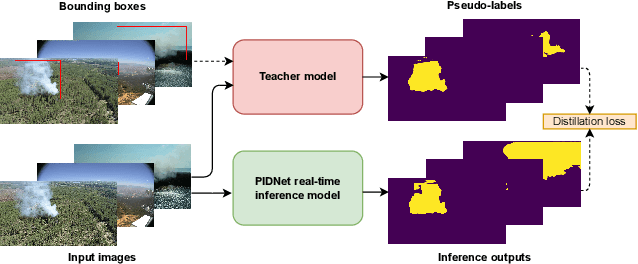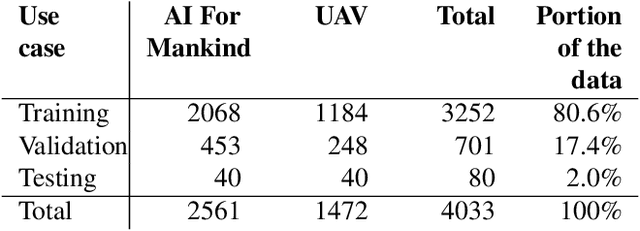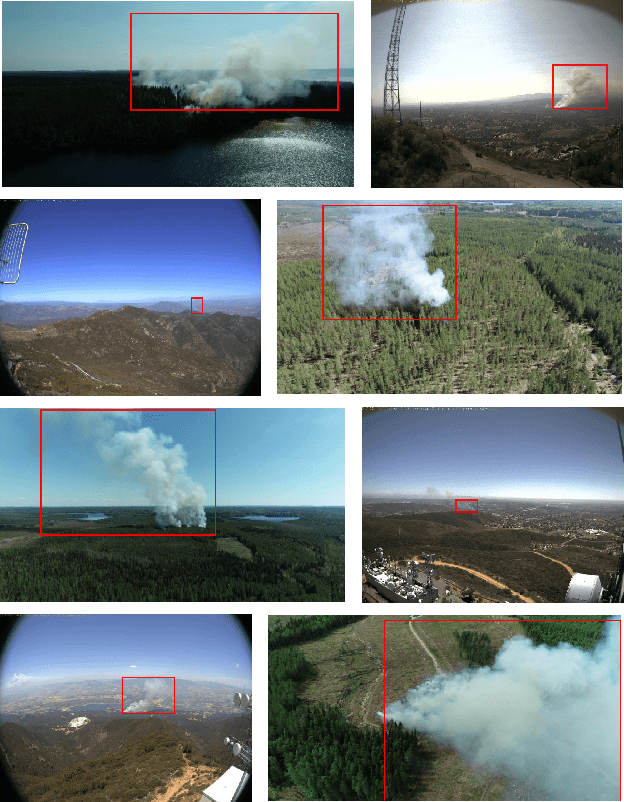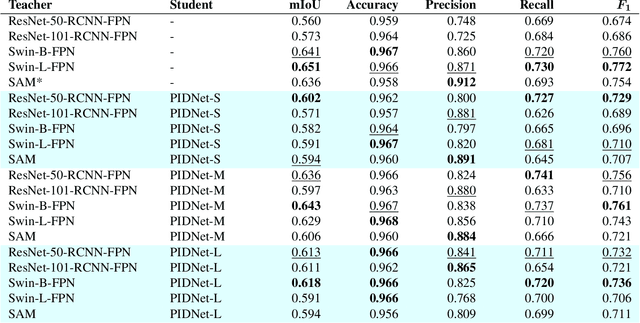Ilkka Pölönen
Detecting Wildfires on UAVs with Real-time Segmentation Trained by Larger Teacher Models
Aug 19, 2024



Abstract:Early detection of wildfires is essential to prevent large-scale fires resulting in extensive environmental, structural, and societal damage. Uncrewed aerial vehicles (UAVs) can cover large remote areas effectively with quick deployment requiring minimal infrastructure and equipping them with small cameras and computers enables autonomous real-time detection. In remote areas, however, the UAVs are limited to on-board computing for detection due to the lack of high-bandwidth mobile networks. This limits the detection to methods which are light enough for the on-board computer alone. For accurate camera-based localisation, segmentation of the detected smoke is essential but training data for deep learning-based wildfire smoke segmentation is limited. This study shows how small specialised segmentation models can be trained using only bounding box labels, leveraging zero-shot foundation model supervision. The method offers the advantages of needing only fairly easily obtainable bounding box labels and requiring training solely for the smaller student network. The proposed method achieved 63.3% mIoU on a manually annotated and diverse wildfire dataset. The used model can perform in real-time at ~11 fps with a UAV-carried NVIDIA Jetson Orin NX computer while reliably recognising smoke, demonstrated at real-world forest burning events. Code is available at https://gitlab.com/fgi_nls/public/wildfire-real-time-segmentation
Domain-specific transfer learning in the automated scoring of tumor-stroma ratio from histopathological images of colorectal cancer
Dec 30, 2022Abstract:Tumor-stroma ratio (TSR) is a prognostic factor for many types of solid tumors. In this study, we propose a method for automated estimation of TSR from histopathological images of colorectal cancer. The method is based on convolutional neural networks which were trained to classify colorectal cancer tissue in hematoxylin-eosin stained samples into three classes: stroma, tumor and other. The models were trained using a data set that consists of 1343 whole slide images. Three different training setups were applied with a transfer learning approach using domain-specific data i.e. an external colorectal cancer histopathological data set. The three most accurate models were chosen as a classifier, TSR values were predicted and the results were compared to a visual TSR estimation made by a pathologist. The results suggest that classification accuracy does not improve when domain-specific data are used in the pre-training of the convolutional neural network models in the task at hand. Classification accuracy for stroma, tumor and other reached 96.1$\%$ on an independent test set. Among the three classes the best model gained the highest accuracy (99.3$\%$) for class tumor. When TSR was predicted with the best model, the correlation between the predicted values and values estimated by an experienced pathologist was 0.57. Further research is needed to study associations between computationally predicted TSR values and other clinicopathological factors of colorectal cancer and the overall survival of the patients.
 Add to Chrome
Add to Chrome Add to Firefox
Add to Firefox Add to Edge
Add to Edge